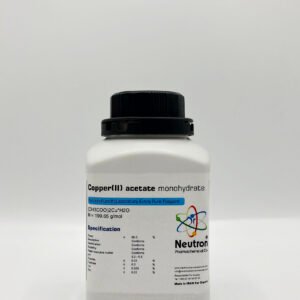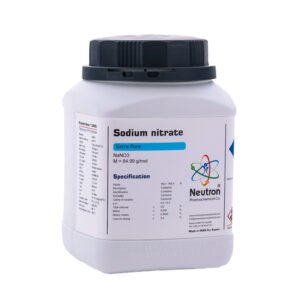di sodium EDTA dihydrate
| Formula (Hill): | C10H14N2Na2O8*2 H2O |
| Molar mass: | 372.24 g/mol |
| Bulk density: | ~700 kg/m3 |
| CAS number: | 6381-92-6 |
| HS code: | 29224995 |
| EC number: | 205-358-3 |
| Storage (temperature): | at + 15 ºC to +25 ºC |
| SDS | Available |
| RTECS | AH4410000 |
| Odour: | Odourless |
| Form: | Crystals |
| Color: | White |
| Ph value: | 4 – 5 (50g/I 20 ºC) |
| Solubility in water: | 100 g/l (20 ºC) |
| Melting point: | 110 ºC |
| Thermal decomposition | 255 ºC |
| Assay | 99.0 – 101.0 | % | |
| Description | Conforms | ||
| Solubility | Conforms | ||
| Identification | Conforms | ||
| Heavy metals | ≤ | 0/005 | % |
| pH (1/20) | 4.0 – 6.0 | ||
| Calcium | Conforms | ||
| Loss on drying | 8.7 – 11.4 | % |
Disodium EDTA dihydrate is a white, crystalline compound that acts as a chelating agent by binding metal ions in solution. It is commonly used in pharmaceuticals, cosmetics, cleaning products, and laboratories for controlling metal ion concentrations.
🏭⚗️ Production
Disodium EDTA dihydrate is produced by neutralizing ethylenediaminetetraacetic acid (EDTA) with sodium hydroxide in aqueous solution, followed by crystallization and drying to obtain the dihydrate form. The process yields a stable, water-soluble compound.
🔬 Properties
Disodium EDTA dihydrate has the chemical formula C₁₀H₁₄N₂Na₂O₈·2H₂O and a molar mass of approximately 372.24 g/mol. It appears as a white, odorless crystalline powder that is highly soluble in water. The compound is stable under normal storage conditions and functions effectively as a chelator for divalent and trivalent metal ions such as calcium, magnesium, and iron.
🧪 Applications
Disodium EDTA dihydrate is widely used in pharmaceutical formulations to enhance stability by binding metal ions that could catalyze degradation. In cosmetics and personal care products, it improves product stability and performance by preventing metal-induced changes. It is also used in cleaning agents, water treatment, and laboratory buffers where control of metal ions is critical for accurate results.
⚠️ Safety
Disodium EDTA dihydrate is generally considered safe at low concentrations but may cause mild irritation to the eyes or skin upon direct contact. Inhalation of dust should be avoided, and it should not be ingested in large quantities. Proper lab safety practices, such as wearing gloves and goggles, are recommended during handling. It should be stored in a cool, dry place away from strong oxidizers.





